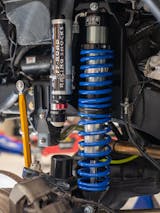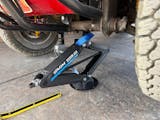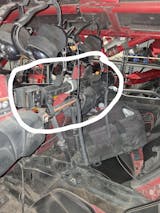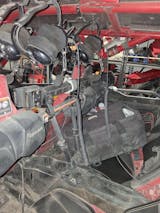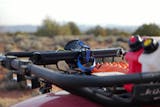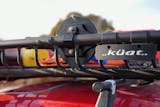Many vehicle issues leave glues in the form of heat or a lack of heat. Here are 4 tips that can help you diagnose issues with an inexpensive temp gun.

4. Help you diagnose brake problems.

After doing 3 or 4 hard stops from speed, use the temp gun to measure the temperature of each brake rotor. If you find one rotor is hotter than the others or you find 1 rotor is colder than the others you can begin your diagnosis there.
NOTE: most modern brake systems use more front brake than rear (approx. 60-70% on rear wheel drive and 70-80% on front wheel drive vehicles), so it is ok to see higher temperatures on the front rotors than the rears.
3. Help you diagnose a rough running issue.

When your engine is running rough you can use a temp gun to check your cylinder temperatures by measuring the temperature of the exhaust port at each cylinder. If one port's temperature is much lower than the rest you can begin your diagnosis on that cylinder.
2. Help you diagnose a cooling system issue.

When you are having a cooling issue you can use a temperature gun to measure the inlet and outlet temperature of your radiator (engine running at operating temp). As well as measure the temperatures across the core of the radiator. If you find cold spots in the core, the radiator needs service or replacement. If the inlet and outlet temperatures are similar then you know where to focus your next steps of diagnosis here (debris, rust, undersized radiator, fans not working, etc.) Measuring temperatures at the engine inlets and outlets can help you determine if you have a stuck thermostat. Upper hose hot & lower hose cool (sometimes cool to the touch) can indicate a lack of flow and a possible stuck closed thermostat.
1. Help you diagnose alignment and tire issues.

Measure the outside, middle and inside of all your tires tread after driving for 20-30 minutes (if not in a race practice situation try to use roads that are straight or have a similar number of left and right turns). If the center of your tires tread is hotter than then outsides, you tire is overinflated. If the outsides of the tread are equal in temperature, but higher than the center, your tire is underinflated. If you have a staggered temperature with the outside being the hottest and the inside the coolest or vice versa with the inside being the hottest and the outside the coolest the vehicles camber or toe is responsible.
NOTE: race cars and track vehicles naturally have more negative camber to help them through the turns. When driven in a straight line or when not driven hard enough around the track, they can exhibit these types of staggered temperature readings. Please keep this in mind when adjusting pressure or considering alignment changes.
Prefer videos, click here to watch.










